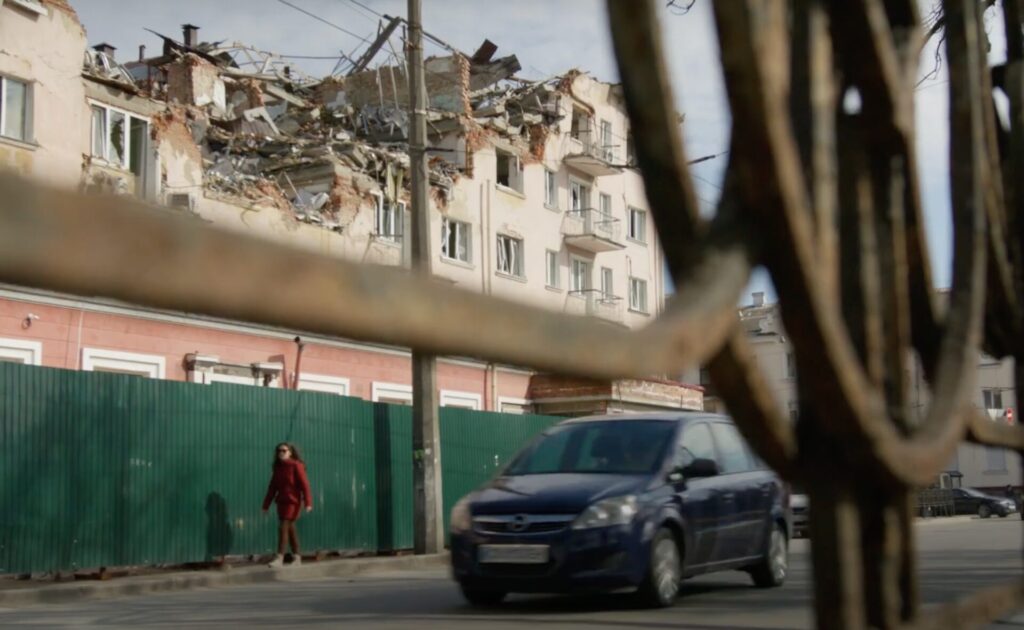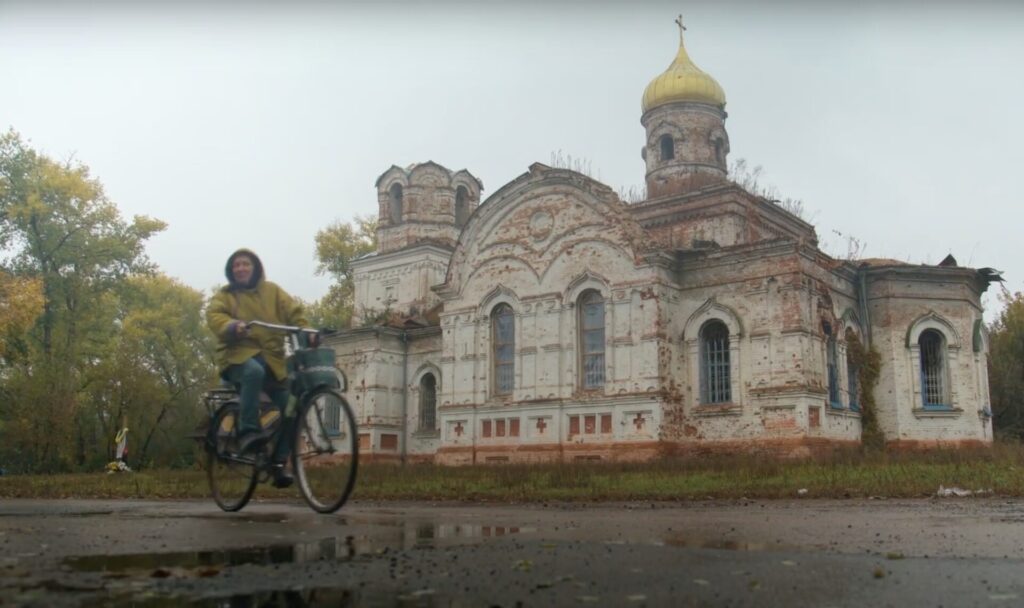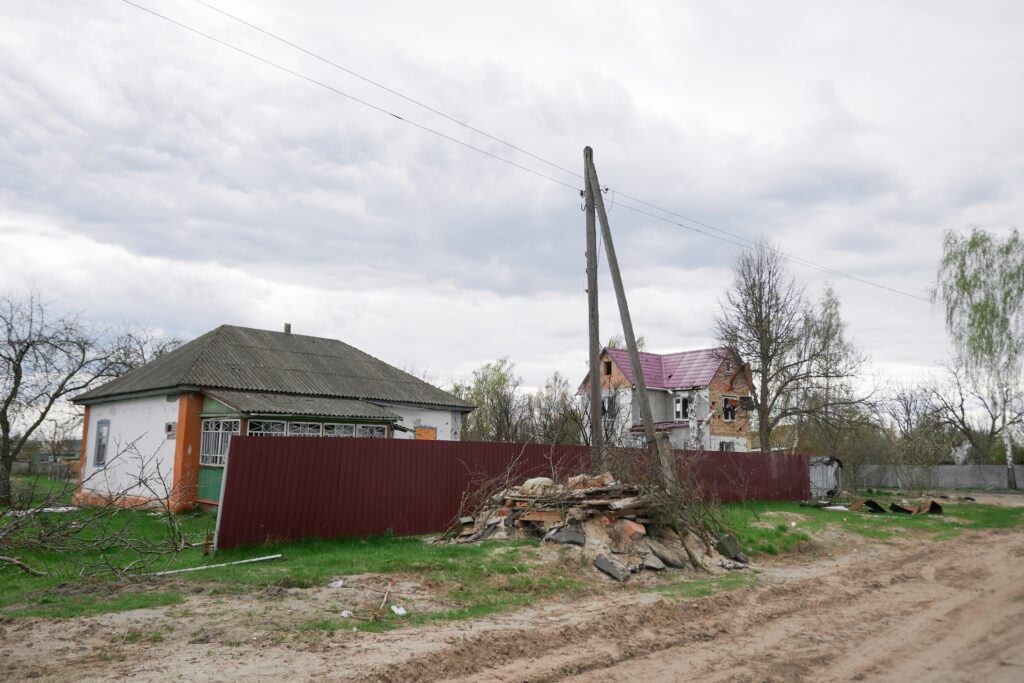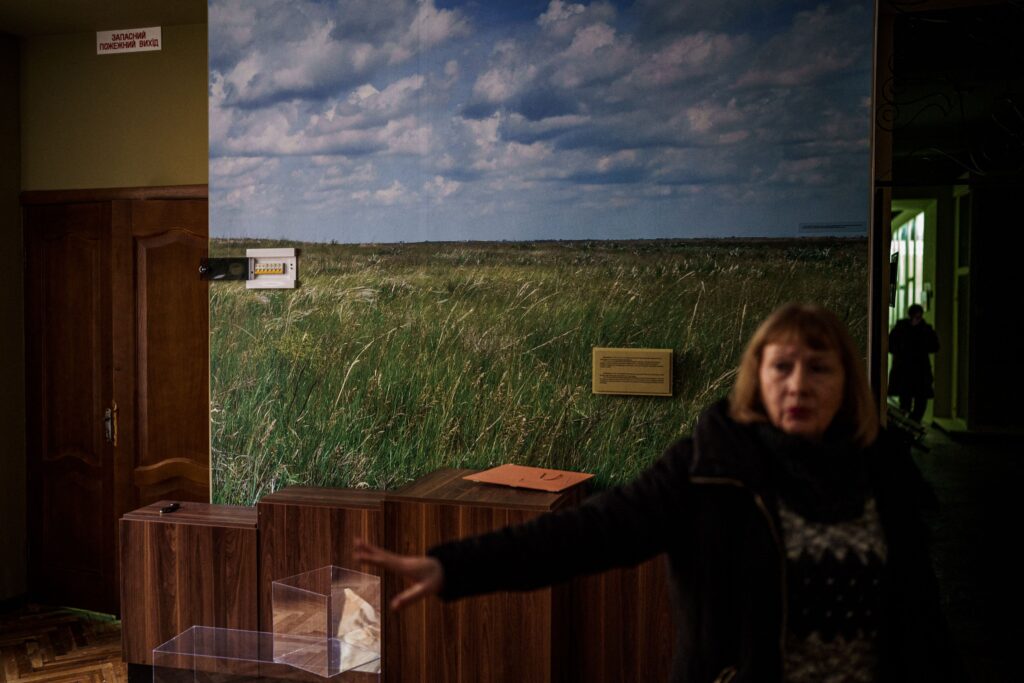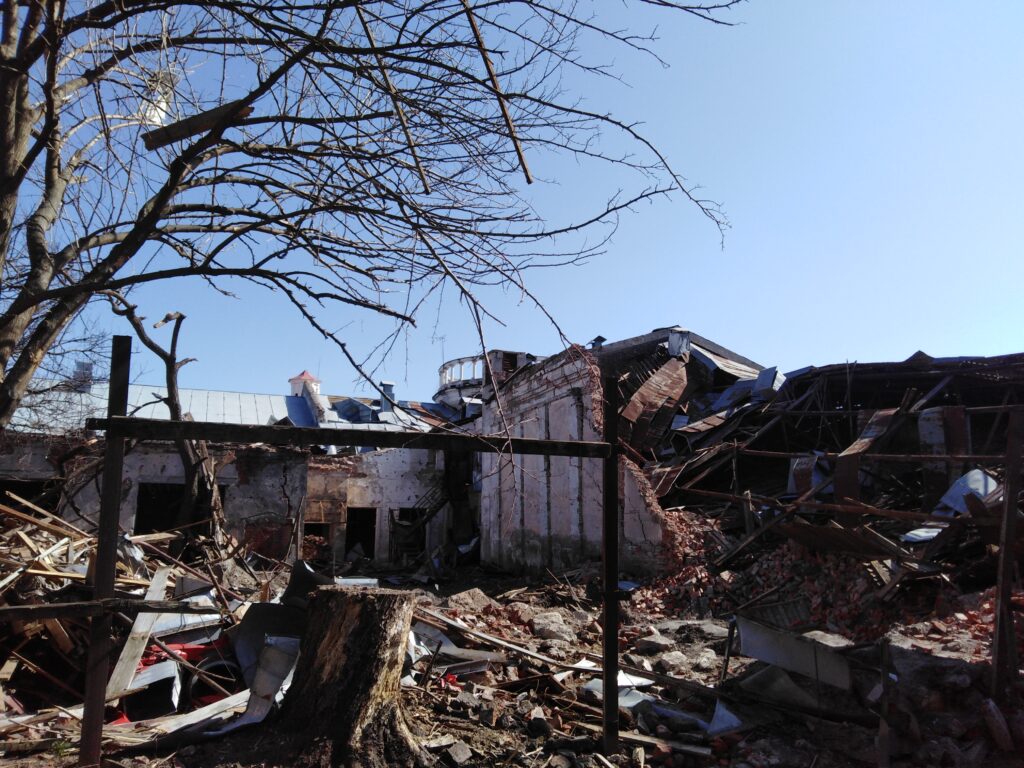Spotlighting War’s Cultural Destruction in Ukraine
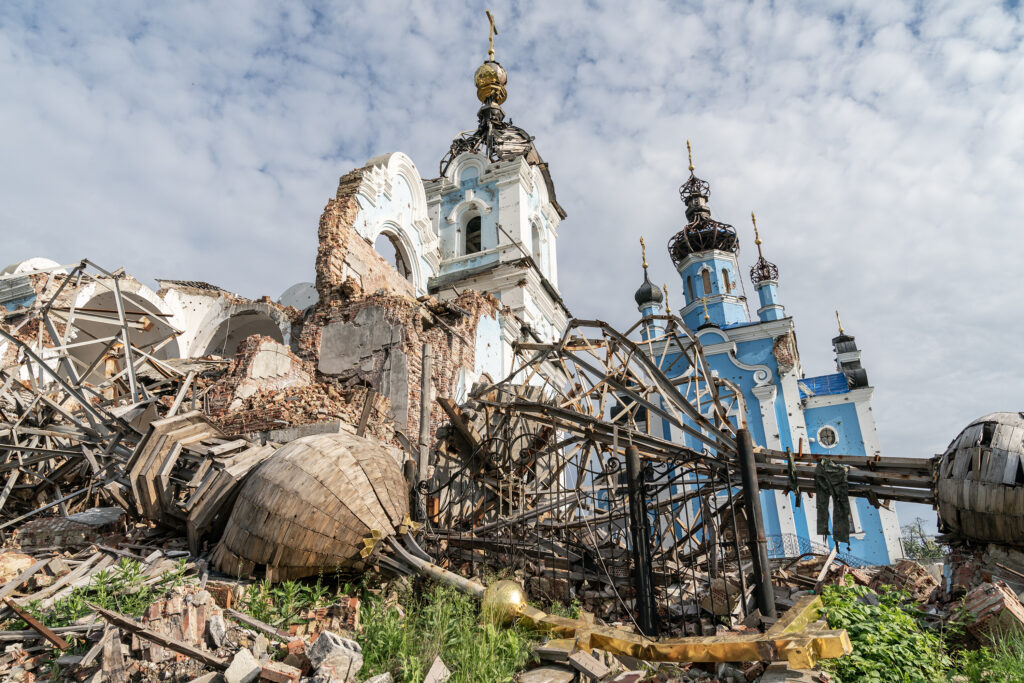
This article was originally published at The Conversation and has been republished under Creative Commons.
WAR DOESN’T JUST DESTROY lives. It also tears at the fabric of culture.
And in the case of Russia’s full-scale invasion of Ukraine, now about to enter its third year, the remarkable destruction of Ukrainian history and heritage since 2022 hasn’t been a matter of collateral damage. Rather, the Russian military has deliberately targeted museums, churches, and libraries that are important to the Ukrainian people.
It’s impossible to document the full extent of the destruction, particularly in the active military zones in eastern and southern Ukraine. However, as archaeologists and filmmakers, we wanted to do what we could. This meant traveling to liberated villages, museums, and churches in northern and eastern Ukraine, adjacent to regions with ongoing fighting.
Working closely with Ukrainian colleagues, we ended up making two nine-day trips—one in March 2023 and another in October 2023.
Here is some of what we found:
SIFTING THROUGH THE RUINS
In liberated parts of Ukraine, the bodies of the dead have long been carried away and, for the most part, buried in local cemeteries. But enter any formerly occupied city or town, and you’ll immediately notice that the scars from battles that took place from March 2022 to July 2022 remain starkly visible.
Driving around Chernihiv, a city in northern Ukraine, we witnessed hundreds of burned-out buildings and many more that are riddled with bullet holes and damaged by shrapnel.
As we wound through small farming villages, we were struck by the ferocity and randomness of modern military firepower. One part of a village could be completely flattened, while a block down the road, the houses were untouched.
During a wet day in the middle of October 2023, we drove through small, tree-lined roads to see the remains of the Church of the Ascension in Lukashivka, a village about eight miles from Chernihiv.
Previously home to about 300 people, Lukashivka was occupied by the Russians in March 2022 and later recaptured by the Ukrainian military.
Built in 1913 with a two-tiered belfry that can be seen for miles, this large, white-brick church is now a shell of what it once was. Its wood flooring has been scorched, and its brick roof blown open. In a few sections of the wall, the original plaster and paintings are preserved.
Inside the place of worship, we traversed the detritus of war, hearing the crunch of spent cartridges, rocket cases, broken bottles, and heaps of burned cans.
We’ll never really know how many soldiers and civilians died fighting over Lukashivka and the church.
We do know, however, that cultural heritage has few friends during war.
The partially preserved church at Lukashivka is one of hundreds of cultural and religious buildings that have been damaged or destroyed over the last two years. This includes the Cathedral of the Transfiguration in Odesa, the Mariupol Drama Theater, and the Korolenko Kharkiv State Scientific Library, one of the largest libraries in Europe.
MORE THAN MEETS THE EYE
If traveling in Ukraine has taught us one important lesson, it’s that the digging of trenches can erase history.
While the destruction of churches, libraries, and museums viscerally evokes a sense of loss, there’s an entire unseen world below the ground surface—filled with untold numbers of artifacts, bones, and buried buildings—that is exposed when trenches are created.
In fact, it’s likely that this war has destroyed more history and archaeology buried below the ground than above it.
As armies did during World War I, the Ukrainian military built deep trenches and bunkers along rivers and high ground in the early months of the war. Two years later, these defensive trench systems are a central element of the ground war and demarcate the front lines.
In many cases, the trenches were dug into the remains of buried archaeological sites, most of which were previously unknown and untouched.
In March 2023, for example, we visited sites around Iripin and Bucha, two villages on the northern edge of Kyiv, to document how medieval and Bronze Age sites buried below the surface had been destroyed by trenches or, in other cases, are now blanketed by minefields to stop Russian military units.
We also went to the 11th-century archaeological site of Oster. Perched on a small hill, southeast of Chernihiv, Oster was an important regional center in the medieval period. It had a brick-and-stone church and a large settlement nearby. As part of the siege of Chernihiv in March 2022, Ukrainian troops built deep trenches and bunkers around the edges of Oster, since the site overlooks rivers and crossing points.
When we visited Oster a year after the invasion, we noticed that the trench system around the church was dug into a large 11th-century settlement and burial ground. Lying exposed on the dirt piles along the trenches were medieval human skeletal remains. The more we studied the system of trenches and bunkers, which encircles an area of about 650 feet, the more human bones we saw.
A crew of archaeologists has returned to photograph the destruction of these burial grounds. But given the ongoing war, it isn’t possible to fully document the destruction, let alone fill in the trenches, which still may be needed by soldiers.
The previously unknown burial ground at Oster is one of hundreds, if not thousands, of similar sites that have been damaged or destroyed in central and northeastern Ukraine.
WAR AND THE FABRIC OF CULTURE
Even after the fighting ends, large areas of Ukraine will remain inaccessible for years, given the widespread use of mines and environmental contaminants.
Surviving collections and museum exhibits inside and outside Ukraine have assumed greater importance: They may represent the sole evidence of ancient cultures originating from these damaged territories.
We can confidently say that Europe has not experienced destruction of this magnitude, let alone this quickly, since World War II.
The bombings of churches, libraries, and residences have destroyed major areas of Ukraine. As with the Nazis’ pilfering of paintings, bronze sculptures, and art in the last few years of World War II, in the first months after the invasion, the Russian army looted museums, stole art, and destroyed churches with missiles and tank shells.
Make no mistake: At its core, the Russian full-scale invasion is a military attempt to erase Ukraine’s history, culture, and heritage.
Seemingly entrenched in a 1950s geopolitical framework, President Vladimir Putin and other representatives of the Russian state dispute that Ukraine is a sovereign nation. Ukraine’s churches, museums, and libraries are a threat to Russia, for they are the material and symbolic fabric that holds together Ukrainian identity and resistance.
That’s why this war is as much about culture as it is about land.

























